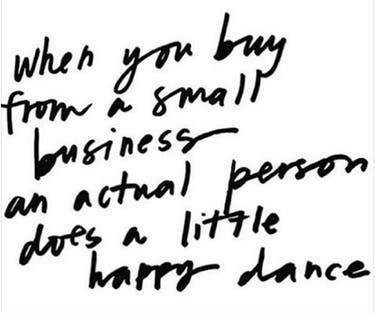Smaller suppliers and retailers, it’s your time.
These companies have many reasons to feel hopeful, as their offerings exactly match many emerging market trends. The following trends prove small is in demand and, in several areas, how small companies can make a big impact.
Retail Reinvention as Opportunity
Market disruption means new opportunities for small companies. The CEO of consumer packaged goods (CPG) giant Mondelez, Irene Rosenfeld, calls today’s retail market “one of the most volatile and uncertain [periods] that I’ve seen in my 35 years in the industry.”1Kell, John. Unpacking Big Food’s Big Dilemma. Fortune. February 24, 2017.
In retail today, shopper traffic and sales continue to flow away from large department stores, shopping malls and many national retail chains due to price competition from e-commerce and hard discounters – and toward smaller retail rivals that are more innovative and nimble.2Alldredge, Kari, Brandon Brown, and Max Magni. Playing catch-up: How to partner with the retailer of the future. McKinsey & Company. June 2016.3 Alldredge, Kari, Brandon Brown, and Max Magni. Playing catch-up: How to partner with the retailer of the future. McKinsey & Company. June 2016.

Experts predict marketing-savvy smaller retailers and consumer goods companies will benefit from the market changes, including consolidation of mass-market retail due to bankruptcies, store closures and acquisitions.4Persinos, John. Main Street’s Revenge: Going “Small” Is The Next Big Retail Trend. Investing Daily. May 19, 2017.
Why? Small retail companies have the competitive advantage of greater agility, which allows them to promptly adapt to evolving consumer tastes. These companies may also identify lucrative market gaps and underserved niches that larger retail companies ignore.
Small players can also win by providing a market alternative as the earnest David among retail Goliaths, as “there will always be push back against ‘Big Business.’” 5Loria, Keith. Are job cuts the future of the food manufacturing industry? Retail Dive. February 21, 2017.
Supplier Trends
All major markets around the world have recently experienced a small-brand renaissance, which is terrific news for smaller U.S. suppliers of consumer goods.6Medeiros, Andre, Steffan Lauster, Steven Veldhoen and Ram Soundararajan. 2017 Consumer Packaged Goods Trends. Strategy&. 2017
In the food and beverage sector, the largest manufacturers account for 45% sales, yet they represent a mere 3% of growth; much growth now comes from smaller manufacturers.7Alldredge, Kari, Brandon Brown, and Max Magni. Playing catch-up: How to partner with the retailer of the future. McKinsey & Company. June 2016. Startups are “winning market share, shelf space, and consumer’s hearts,” plus billions in venture capital, as investors see massive market potential for trends like the startup foodie niche.8Kell, John. Unpacking Big Food’s Big Dilemma. Fortune. February 24, 2017.
Investors see massive market potential for trends like the startup foodie niche
Small players are outperforming their bigger rivals in 18 of the top 25 CPG categories, which market analysts attribute to small companies’ authenticity, connection to local growers, healthy ingredients or quirky stories.9Medeiros, Andre, Steffan Lauster, Steven Veldhoen and Ram Soundararajan. 2017 Consumer Packaged Goods Trends. Strategy&. 2017
As proof that small suppliers are in demand, more large retailers are partnering with them because their products match what shoppers want, including the trends we explore below.
Retailer Trends
Independent retailers also enjoy greater demand. Last year’s Small Business Saturday, which fell the day after Black Friday, set a new record by attracting 112 million shoppers, up 13% from 2015.10Clifford, Catherine. Small Business Saturday saw a record 112 million shoppers this year. CNBC. November 28, 2016.
Even with the ease and convenience of online shopping may offer, many consumers still prefer to shop in physical stores, and they’re even willing to pay a premium for the experience.11Hibbs, Brian. Why local brick and mortar retailers need to rethink everything they know. Fortune. January 23, 2017. That may be because some shoppers seek a more emotionally rewarding shopping experience that mimics the feel of Main Street.12Persinos, John. Main Street’s Revenge: Going “Small” Is The Next Big Retail Trend. Investing Daily. May 19, 2017.
Small Business Saturday 2016 set a new record,attracting 13% more shoppers than in 2015
Independent retailers may satisfy shoppers’ desire for an attentive personal touch. As hungry underdogs, small retailers may differentiate themselves with outstanding service to encourage customers to come back (and tell their friends about the terrific experience).
The trend towards small is so hot that even mammoth retailers are choosing to shrink their store footprints to improve the customer experience. Major retailers like Target, Best Buy and Ikea have invested in smaller-format stores with more specialized assortments to deliver greater convenience, accessibility and speed.13Retail Trends and Predictions 2017: 12 forecasts for the retail industry in 2017. Vend.
Whole Foods also opened new Whole Foods Market 365 stores with smaller formats to save busy shoppers time.14Stanger, Tobie. Faster, Fresher, Cheaper: The Grocery Shopping Revolution. Consumer Reports. May 23, 2017. Experts say the trend away from huge stores will continue, as customers value smaller, more specialized outlets.15Here’s what shopping will look like in 2017. World Economic Forum. 2017.
What Shoppers Want
Small retailers and suppliers that align with today’s top consumer trends have the greatest opportunity for success. Specifically, small suppliers and retailers can attract more consumers by selling products that are:
- Innovative: Younger consumers prefer products that are new and innovative.16Persinos, John. Main Street’s Revenge: Going “Small” Is The Next Big Retail Trend. Investing Daily. May 19, 2017. Most (66%) Millennial shoppers purchased a new product on their last grocery shopping trip, as did 41% of Baby Boomers.17Nielsen. Global Millennials: The We, More and Now Generation. September 2016. In addition, 48% of Millennials and 34% of Baby Boomers are willing to pay a premium for innovative, new products.18Nielsen. Global Millennials: The We, More and Now Generation. September 2016.
- Healthy: Surging popularity for the health and wellness trend means consumers now prefer healthier foods rather than highly-processed snacks, which explains in part why many Big Food manufacturers’ sales have slowed.19Kell, John. Unpacking Big Food’s Big Dilemma. Fortune. February 24, 2017. “People everywhere have become more attentive to their health and food choices,” says Mondelez’s Rosenfeld, and this trend has forced many multinational CPG companies to rethink their business strategies.20Kell, John. Unpacking Big Food’s Big Dilemma. Fortune. February 24, 2017.
- Natural and organic: Related to the health and wellness trend, sales of natural and organic products have exploded. Consumers want simpler, less processed food choices; they care about where their food comes from and how it’s made, which has boosted demand for organic products.21Loria, Keith. Are job cuts the future of the food manufacturing industry? Retail Dive. February 21, 2017. Millennials are 38% more likely than their older counterparts to buy natural and organic goods, including health and beauty products.22Nielsen. Brands That Are Building Momentum With Millennials. May 23, 2016.
- Local: Millennials lead the “buy local” movement because they value authenticity and the personal, attentive shopping experience of buying local.23Nielsen. Millennials in 2015: Retail Deep Dive. October 2015. Edelman Digital found 40% of Millennials prefer to shop local, even if it costs more. They value goods that are handmade and locally produced; they also want to know the story, history and heritage behind the items they purchase.24Nielsen. Millennials in 2015: Retail Deep Dive. October 2015.
- Purpose-driven: Passionate small companies with a meaningful mission attract today’s conscious consumers. Almost half of Millennials want to buy from companies with a strong social purpose or mission.25Nielsen. Nielsen Unveils First Comprehensive Study on the Purchasing Power and Influence of the Multicultural Millennial. January 18, 2017. For instance, environmentally-minded companies and products are in demand, as consumers now pay attention to retail companies’ sustainability efforts.26Loria, Keith. Are job cuts the future of the food manufacturing industry? Retail Dive. February 21, 2017.
Consumers also demand more artisan products, a trend we will explore in an upcoming post.
Less is More
As the retail sector reinvents itself, small suppliers and retailers can feel encouraged, knowing they have what shoppers want. These companies can use their small size, passion and persistence as advantages. By monitoring consumer trends, quickly adapting products to meet shoppers’ needs and offering personal service, small retail companies can outshine their larger rivals.
Stay tuned for our next post on 12 Ways Small Companies Can Win Big for practical tips on how to apply these market trends to your small business strategy.

